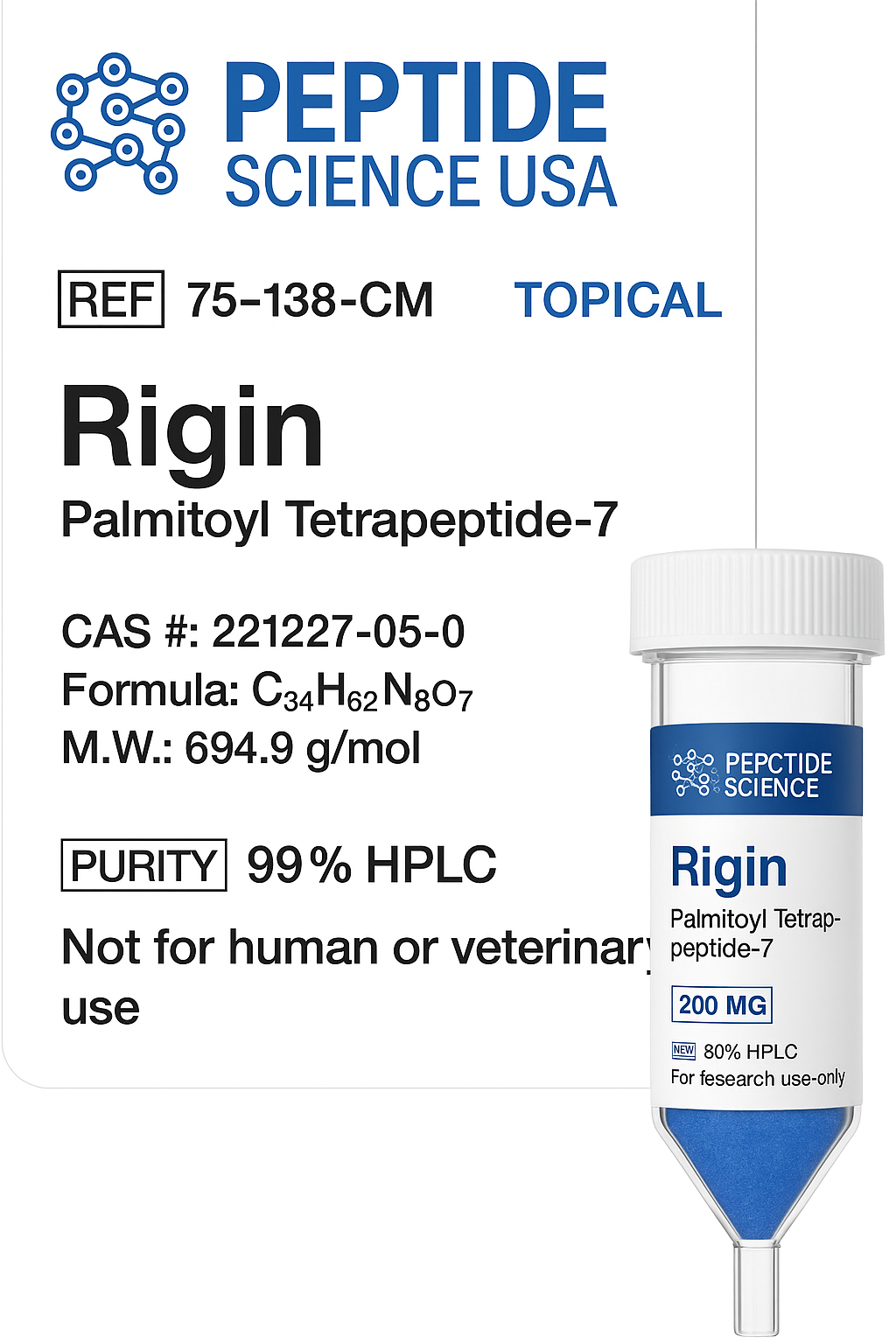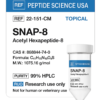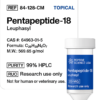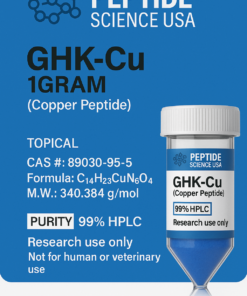Rigin 200mg (Palmitoyl Tetrapeptide-7) (Topical)
$200.00
Rigin 200mg (Palmitoyl Tetrapeptide-7) is a topical peptide that helps reduce inflammation and improve skin elasticity by inhibiting interleukin-6 (IL-6) secretion. citeturn0search0 It also stimulates collagen production, promoting a firmer, more youthful complexion. citeturn0search1
Rigin 200mg (Palmitoyl Tetrapeptide-7)
Rigin is a name that can be applied to a compound in which a fragment of immunoglobulin G (IgG) has been attached to a fatty acid residue (palmitoyl in this case). It can also strictly refer to the IgG fragment alone [1]. In this article, the term refers to the full palmitoyl-Gly-Gln-Pro-Arg molecule and not to the peptide alone. Rigin is of scientific interest for its ability to boost elasticity and firmness of skin. It can also improve skin hydration and smoothness by controlling the secretion of cytokines.
Research Application
Rigin was originally developed as a potential immunostimulatory and neurotrophic (can regrow nervous tissue) peptide. It is still under active investigation for its ability to encourage nerve healing, particularly after burns and tissue grafts [2].
Recently, interest in rigin has increased among researchers involved in trying to understand how extracellular matrix (ECM) growth is modulated. Rigin is being investigated in animal models for its ability to influence collagen and elastin synthesis in the ECM and thus for its ability to improve skin elasticity and firmness [3].
What Is Rigin?
The rigin peptide is a fragment of the IgG antibody found in many mammals (amino acids 341-344 of human IgG H-chain). It was originally developed after a different tetrapeptide, tuftsin, was discovered to have immunostimulatory and neurotrophic activities [
The way in which rigin is used can be confusing because sometimes the term “rigin” is used to refer only to a peptide and sometimes to the same peptide with palmitoyl attached. “Rigin peptide” may be a more accurate name for the IgG fragment alone, but the word rigin can legitimately refer to both entities, so take care when discussing. Rigin may also be referred to as palmitoyl tetrapeptide-7 or simply as palmitoyl tetrapeptide.
What Does Rigin Do?
Rigin, it turns out, is capable of modulating the production of interleukin-6 (IL-6), a signaling molecule made by T-cells. IL-6 recruits additional immune cells to the site of injury or infection. Sometimes, however, the immune response can become too large and may damage healthy tissue. In the case of skin, this can lead to damage to the ECM and thus breakdown of collagen and elastin. By counteracting the effects of IL-6, rigin is able to reduce the effects of an immune response and protect the skin from damage.
Rigin has also been shown, in animal models, to have activity against matrix metalloproteinases (MMPs). MMPs are a group of enzymes involved in the breakdown of ECM proteins during normal tissue growth. By downregulating the activity of MMPs, rigin can reduce ECM damage and allow cells that restore and maintain the ECM to keep up with the effects of aging [4]. The action of rigin is similar, in some ways, to dehydroepiandosterone, which is sometimes referred to as the “youth hormone.”
Rigin Research on Reducing Skin Damage?
Based on observations from animal research and from studies on human skin cells grown in a laboratory setting, rigin can reduce the effects of aging on the skin. This means reducing the appearance of fine lines and wrinkles as well as evening out skin tone, improving elasticity, and increasing skin hydration. Rigin is often combined with other ingredients, such as palmitoyl oligopeptide, to create a synergistic effect that boosts skin rejuvenation [5].
5 reviews for Rigin 200mg (Palmitoyl Tetrapeptide-7) (Topical)
Add a review Cancel reply
Related products
Cosmetic Peptides
Cosmetic Peptides
Cosmetic Peptides
Cosmetic Peptides
Cosmetic Peptides
Cosmetic Peptides
Cosmetic Peptides
Cosmetic Peptides













Mason Rivera –
Soothing and firming. I’m impressed.
Olivia Jenkins –
Redness and puffiness gone within a week.
Marcus Ellis –
One of the best for inflammation and firmness.
Courtney Bell –
courtney.bell.p7@yahoo.com
Dylan Torres –
I combine it with Matrixyl—killer combo!